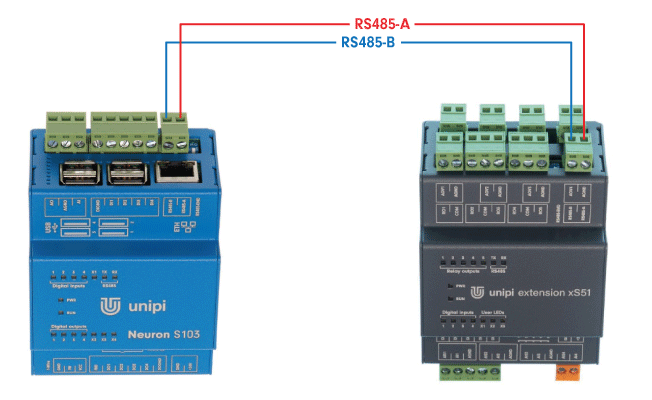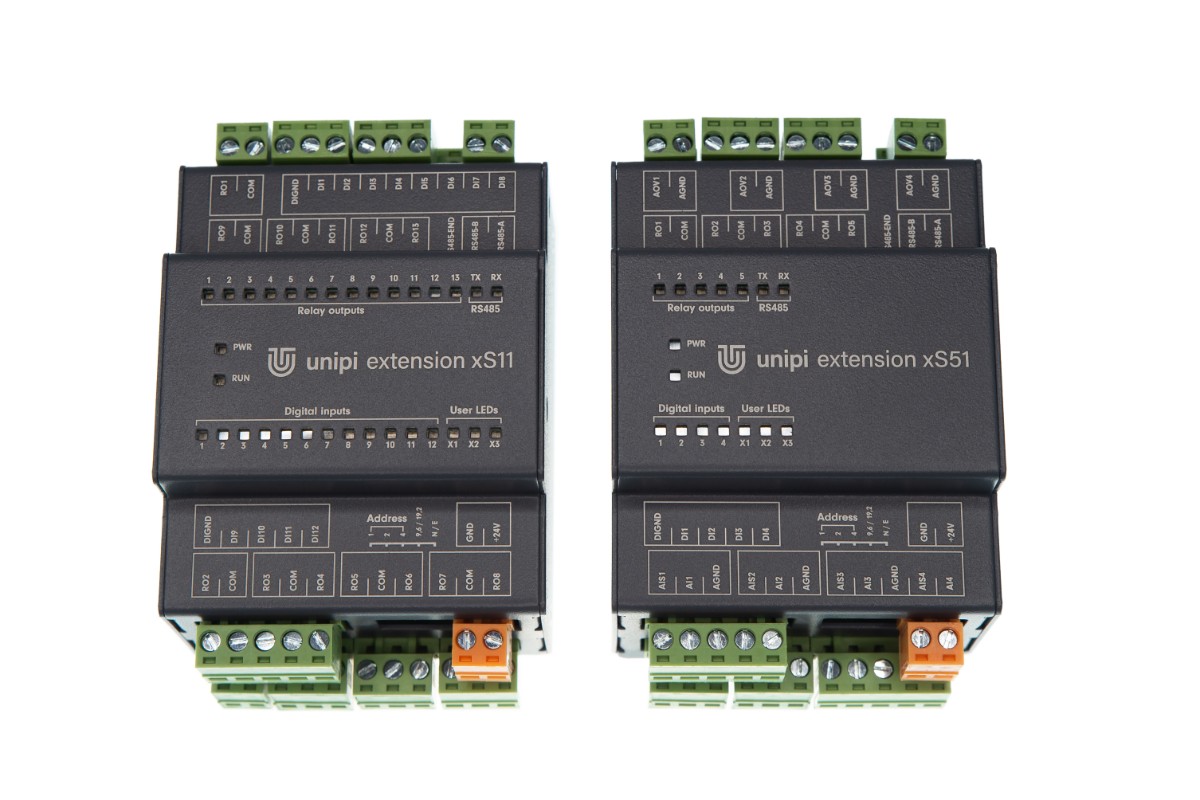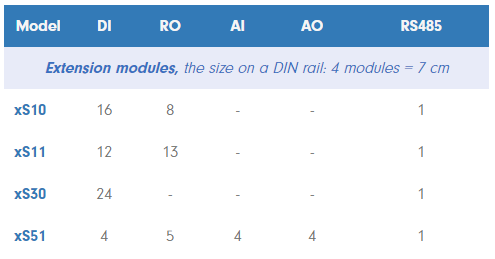This is an old revision of the document!
Unipi Extensions
The Extension line is designed as a simple and cheap method of automation systems expansion by adding more I/Os without the need to purchase new controllers. Extension modules are communicating with the PLC over the RS485 serial line and albeit they are designed primarily for the use with Neuron controllers, they can be used in combination with any PLC supporting the RS485 serial line and Modbus protocol. That makes the xS-line an excellent choice for cases where other PLC manufacturers either do not offer their native extension, or their purchase would be cost-ineffective.<hidden>
Unipi Extension model overview
Connection to Unipi controllers
You need only two cables to connect the Unipi extension to the controller. Just interconnect the RS485-A port on the controller to RS485-A port on the extension and RS485-B on the controller to RS485-B on the extension.

Examples of usage
Unipi Extension modules are a simple and inexpensive solution in cases your PLC's I/O number is no longer sufficient. Modules are managed by a control logic running on the PLC, and as such don't require any programming. Multiple extensions can be placed on a single bus, allowing you to create a network of modules with a very high number of I/Os, controlled by a single PLC.
Alternatively, you can use the extension modules to make inputs and outputs accessible in installations located away from the central distribution box with the PLC (ie. next room, another storey etc.). You can simply install the extension in the remote location, connect all devices you want to control or monitor, and then connect the extension to the PLC using only a pair of serial cables. This solution significantly decreases the amount of needed cabling, reducing the expenses considerably.
Special functions
Along with standard inputs and outputs, the extension modules also feature other functions enhancing their performance.
Direct Switch
This function connects a digital input with digital output or relay output. The function is independent on the master PLC and is suitable for time-critical applications (ie. lighting control). The function can be configured to one of three available modes:
- Copy: output is switched by an active input
- Invert: output is switched by an inactive input
- Toggle: output is switched by any change on the input
Default settings
This function allows the user to store the default configuration of the module into its internal memory. If the module is rebooted, the default configuration is loaded automatically.
Master Watchdog
The function monitors the communication between the module and the controller. If the communication is interrupted (eg. no response from the controller is detected within a defined time frame), the module automatically loads the default settings. This function keeps the module operational even in case of a controller failure or software issues.
Device addressing and DIP switch settings
Addressing the extension module can be done either via control software running on the remote master control unit or can be set manually via the integrated DIP switch. The DIP switch allows the user to set up to 4 bits of address and is evaluated in preference to software settings. If the address on DIP switch is set to “0000”, all DIP switch settings are ignored and the software settings take priority.




